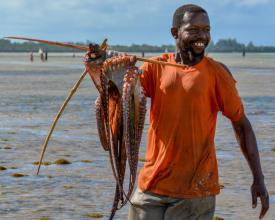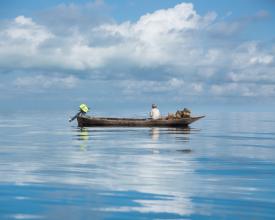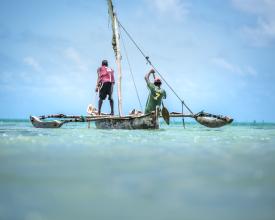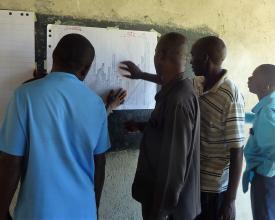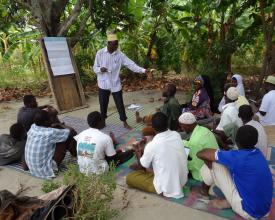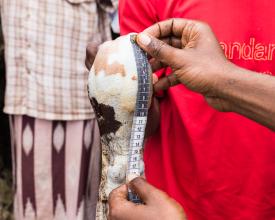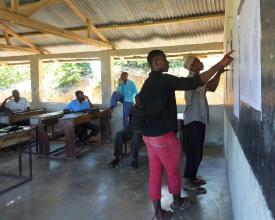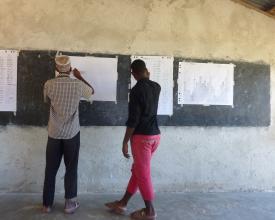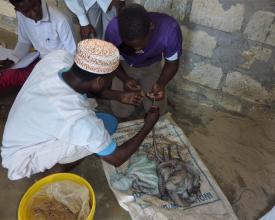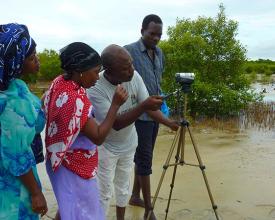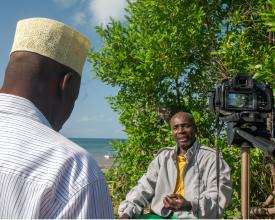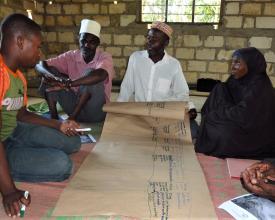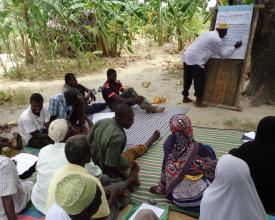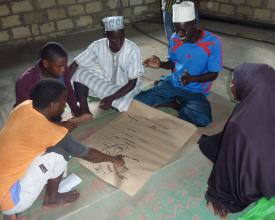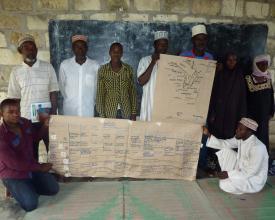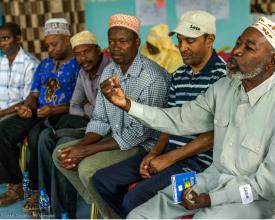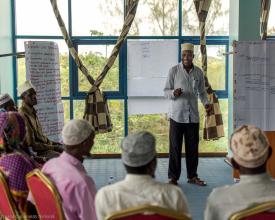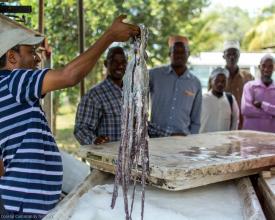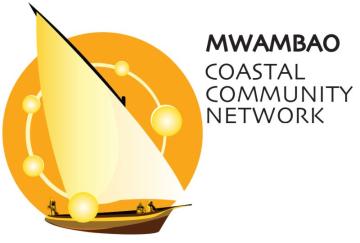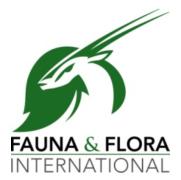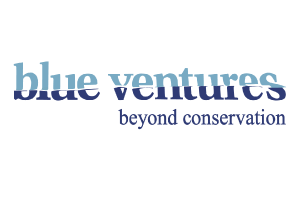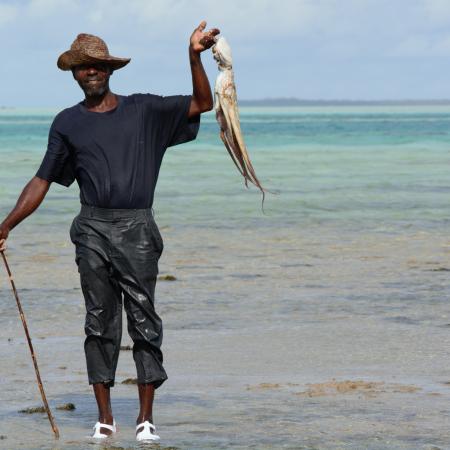
Octopus management - an entry point for collaborative fisheries management
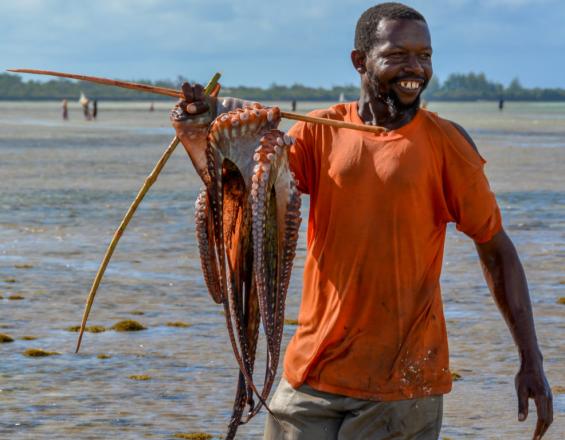
This solution addresses sustainable marine management in Zanzibar in the face of increased fishing pressure. It illustrates that the implementation of a successful octopus management regime can improve yields in a very short period of time through 3-month voluntary no-take zones (NTZ). The participatory approach in training, learning and data analysis can provide an entry point for the wider introduction of collaborative management, to the benefit of all stakeholders.
Context
Challenges addressed
Declining fisheries and lack of capacity and experience for collaborative management. There is limited precedent for collaborative management in Zanzibar fisheries and limited understanding of opportunities within current legislation. Population pressure, climate change impacts, lack of alternative livelihoods, limited value addition, replacement of traditional with more efficient gears, access to resources, and increased market demands for export, increase pressure on marine resources.
Location
Process
Summary of the process
- Discuss principles of octopus management with fishers and willingness for a voluntary closure. Work with Village Fisher Committee (VFC) to carry out mapping of octopus resource areas and identify potential locations for No-Take Zones (NTZ), clarify by-law procedures and provide training in record-keeping and patrol. Carry out awareness raising in neighbouring villages. Carry out octopus value chain analysis interviews with key stakeholders.
- BB1. Recruit and train recorders and data logger (min one month before closure), begin to collect data.
- BB3. Provide further training to the committee on standard operating procedures.
- BB2. After NTZ opening, carry out Participatory Video training and make a short film with the committee on lessons learned (this is an optional step).
- BB1. At least 3 months after opening, carry out participatory data analysis with recorders and present results to the Department of Fisheries and the wider community and discuss implications for management.
- BB4. Carry out value chain analysis for other fisheries and combine with resource mapping to set conservation targets. This will identify further research needs and facilitate management planning for the entire fisheries area.
Building Blocks
Community data collection and participatory analysis
This building block relates to the ownership and in situ analysis of collected monitoring data. At the pilot site, four village school-leavers were recruited and trained to record data on octopus catches at each of two landing sites. Training was given in weighing and measuring the catch of 30 fishers/day over the 16 main fishing days of the lunar month (spring tides). Data books were then submitted monthly to the data logger; a local school teacher who was trained in excel using a laptop computer. Project leaders kept in regular contact with data recorders and the results were checked to identify problems at an early stage. After 8 months of recording, two parameters were chosen by which to examine the results of the exercise with the recording team: total catch per fishing period for both landing sites, and average size of octopus per fishing period. Recorders were shown how to make bar-charts to display the results. A detailed discussion with project leaders explored what the data and trends might suggest. The data recorders then visited the headquarters of the Department for Fisheries Development and presented their results. An ensuing discussion explored the implications for management and any changes suggested.
Enabling factors
- Members of the community that can read and write in order to be able to make written records of catch data
- Buyers who are amenable to their catch being weighed and recorded at the landing site
- A community member who can be trained to log data on a laptop
- Regular support and interest in the work of the data recorders by project leaders
- A supporting partner/project leader who can facilitate simple analysis of data collected in a participatory manner
Lesson learned
- Data recorders need a thorough understanding of the data to be collected and of the importance of correct recordings. (People’s exact names and ages, as well as the time spent fishing are important so that fishing effort can be calculated for instance).
- Regular logging and checking of data is crucial so that mistakes or misunderstandings can be picked up early and corrected accordingly (use of a restricted entry form (macro) helps minimize errors).
- Participatory analysis of data needs to be given adequate time and kept at a level that is easily assimilated and presented.
- Participatory analysis of data gives the data recorders and the Village Fisheries Committee pride and confidence in their work and raises their standing with Fisheries Department officers. It also gives them evidence/references for discussion of future management options with the community.
Participatory video for documentation and lesson sharing
Participatory video (PV) is used to explore octopus management in depth, document success, challenges or traditional knowledge of the octopus fishery; and monitor changes in attitude, knowledge or yield over time. Trainees, many of whom have never handled film-making equipment, are trained in the basic techniques; · Trainees decide the content of the film and work together to design the storyboard; · Trainees decide who and where to interview and all film is reviewed and discussed daily on return; · Editing is time-restricted (2-3 days) and is guided by a ‘paper edit’ carried out with trainees/community members. Having left the film location, subsequent editing is not carried out (apart from subtitling) so the film remains as reviewed by trainees/village communities. The resulting film is a visual output that is used to share lessons and experiences about octopus management and that builds on the oral traditions of local fishing communities in a language and terminology that is accessible to them. The aim is not to produce perfect cinematography but to produce a community product and communicate octopus management issues and options to a wider groups of stakeholders including new villages. This only needs repeating in one or two communities but is useful in the piloting period.
Enabling factors
- Availability of technical equipment to make community films and to show them
- Trainees and trainers available for a period of at least 12 days
- Commitment to the whole process from the team of trainees
- Facilitators who are trained in the process and techniques of filming and editing
- Financial resources to cover time-input of participants
- Clear terms of engagement and full consent for filming
- Consent from all participants to allow the organization and the community to use the film freely in its current form
Lesson learned
- PV is an extremely powerful tool for getting ‘beneath the skin’ of an issue PV imparts many skills to the community
- PV builds trust and understanding between facilitators and trainees
- If possible, it is preferable for trainees to have long-term access to simple film equipment or smartphones for continued use and recording of lessons
- PV requires a committed and skilled team of facilitators but they do not need to be trained film-makers or photographers
Resources
Fisher Committee capacity building
Collaborative management explores opportunities within current fishery regulations and laws and provides an opportunity to make improvements in the management of octopus and other species fisheries. Challenges lie both in lack of capacity of Village Fisheries Committees but also the ability at Fisheries Department level to hand over management responsibilities to these committees. Officers are often unfamiliar with the principles of collaborative management and how it can improve fisheries management locally and assist the Department in discharging their responsibilities e.g. patrolling, local closures etc. Project leaders have involved Fisheries Department officers in all trainings of Village Fisheries Committees and ensured regular feedback to the Department's HQ. A manual has been compiled to assist Department officers and to guide Village Fisheries Committees. It includes sections on: · Standard operation procedures for Village Fisheries Committees · Mechanism for handling conflicts · Process for by-law formulation · Guidelines for record keeping · Strategy for self financing · Communication strategy
Enabling factors
- Training modules available
- Supporting NGO/trainer with required skills and resources
- Community interest and will
- Conducive relationship with Department of Fisheries officers
- Enabling legislation
- A manual for Village Fishery Committee operation procedures prepared in the local language
Lesson learned
- Where collaborative management for fisheries is new, it is imperative that fisheries authorities do not feel threatened by the process and fully understand the benefits. It is thus important that the concerned fisheries officers take part in any training and that Department HQ staff are kept fully informed of the process.
- Sensitive facilitation during trainings is important
- Ongoing support/training for Village Fisheries Committees for a period ideally of not less than two years is desirable in order to build capacity and to assist with ongoing challenges
- During development of local by-laws it is important that suggested fines/penalties are implementable
- Roles and responsibilities of committee members should be clearly understood to aid in the election of the most appropriate persons to key positions
- Opportunities for committee self-financing should be explored in collaboration with the fisheries authorities, including opportunities for revenue collection
- Building capacity for conflict resolution is very important especially in a previously open access fishery
Value chain analysis for key fisheries
This entails the collection of information through focus groups and interviews with fishers and buyers to understand the octopus fishery, number of buyers, prices, processing, export destination and decision-making criteria, in particular whether a fisher is ‘locked’ into a relationship with a buyer. The interviews use the value chain questions included in the STEP survey designed by E. O’Neill of Stockholm Resilience Center. Interviews and focus groups were held with octopus, sea cucumber and cowrie collectors and buyers and seaweed growers. Information has been gathered as to export markets and collector/buyer relationships. The supply chain for octopus has been elaborated, key players identified and links established. Buying price fluctuation has been noted and reasons explored. This information is invaluable when designing an intervention to add value to the fishery or when looking at the viability of new market buyers or destinations. This work in Pemba has been followed up with 'participatory market system development' workshops (supported by FFI) with all stakeholders. This resulted in commitment from all players to play their part in supporting the intervention, including buyers agreeing to negotiate a set price with fisher committees before 'opening day'.
Enabling factors
- Trust between the interviewee and the interviewer leading to open sharing of information
- Availability of project staff to carry out interviews in conjunction with fisheries officers
- Availability of financial resources to cover working times of those involved
- Prior information (i.e. stock assessments if possible) on species vulnerability for a particular fishery
- Supportive buyers
Lesson learned
- Some export markets have continued for many years without any consideration of demands at destination and whether value can be added at the place of origin. Possibilities for processing and marketing potential however must be carefully assessed, e.g. by looking at the sustainability of current levels of harvesting.
- Credit facilities and trust appear to be the main motivating factors for fishers to stay with a particular buyer.
- Main buyers are not as ‘irreplaceable’ as supposed and alternative market options were revealed, as well as alternative processing options i.e. drying octopus to transport to local markets when export buyers were not purchasing (Pemba). Maintaining relationships with supportive buyers however is important where possible.
- There is apparently no local incentive to fish larger octopus although some export markets are thought to pay a higher price for these individuals.
Impacts
- Successful demonstration of local management capability
- Successful demonstration of a successful management regime for octopus
- Increased quantity and average size of octopus over the project period (early 2015 to today)
- Improved understanding of local governance and MCU (Marine Conservation Unit) regulations both by Village Fisher Committee (VFC) and by Pemba Channel Conservation Area (PECCA) managers
- Understanding of the mechanism of establishing local by-laws
- By-laws in place
- Steps in building collaborative management understood and documented in a manual
- Ability to collect, log and analyze basic catch data locally
- Ability to document experiences and observations using participatory video so that lessons can be shared more widely
- Community willingness to both repeat the closure for octopus but also to begin exploring targeted management regimes for other species such as sea cucumbers, cowries and key fish species
- A close relationship has developed between marine conservation unit authorities and the local village fisheries committee (VFC)
Beneficiaries
Pilot villages, Fishers Committees (VFC), conservation area managers, buyers and consumers of marine products, Department of Fisheries Development, MWAMBAO Coastal Community Network
Sustainable Development Goals
Story

Octopus “banks” are an exciting first step towards building collaborative management. Day Octopus (Octopus cyanea) rarely live beyond 24 months. The female who breeds only once, lays, protects and aerates her eggs in a deep coral den for 30 days. Initially dispersing, the young eventually settle again on the reef where they grow fast, doubling their size in two months. Octopus fishing is an important livelihood source in Zanzibar. Actually, very few local people eat octopus; a large part of the catch in Pemba is shipped to Europe, with catch from Unguja Island going to local tourist hotels. In 2014, MWAMBAO Coastal Community Network, was approached by the IOC-Smartfish programme, interested in piloting sustainable octopus management, and also by Fauna & Flora International, wanting to promote co-management in the Pemba Channel Conservation Area. We suggested combining approaches, using sustainable octopus management as an entry point to wider co-management. The selected pilot island of Kisiwa Panza had seen octopus catches declining. Hooked iron rods have replaced traditional sticks for men and women hunting octopus on the reef-flats, and men use masks and fins to fish for octopus in deeper waters. The villagers selected a 60 ha. no-take zone and fisher committee members patrolled the area for three months. We trained school leavers to record the catch and recruited a school teacher to log the data. We worked with the committee and with PECCA staff to create by-laws and to carry out awareness-raising campaigns locally. Women suggested lifting the closure in the expensive month of Ramadhan – in effect, the reserve would be an octopus “bank.” Only two cases of poaching were detected and on opening day, more than 600 fishers arrived - one woman caught an 8 kg giant, a very rare event. Eight months of monitoring showed that post-opening catches initially increased by more than 100%; 4 months later, catches had not yet dropped back to pre-closure levels (lows) and average octopus size seems to have increased. Village monitors presented their results to the Department of Fisheries and the Village Fisheries Committee recorded their experiences using participatory video. Octopus closures yield quick results. Our experience has been that the tangible benefit evidenced on the day of opening builds trust between Village Fisheries Committee and fishers and between fisheries officers and the community, thereby opening the door to further co-management negotiations.
